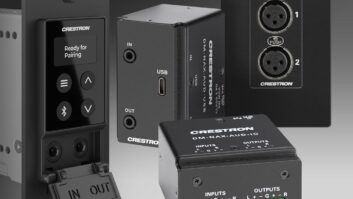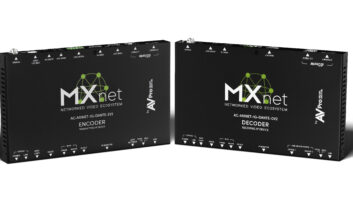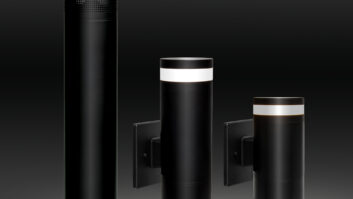What is audio over IP (AoIP)? The simple technical answer is that it is the use of computer networks to transport audio and video between devices, replacing legacy technologies such as analog, AES/EBU, and others.
A more contextual answer is that audio over IP has leveraged networking to transform the world of professional sound, fundamentally changing to ways in which systems connect, expand, and deliver content to people.
Thus, it is no surprise that the advantages AoIP brings to theaters, stadiums, recording studios, and concert tours are now showing up in residential installations.
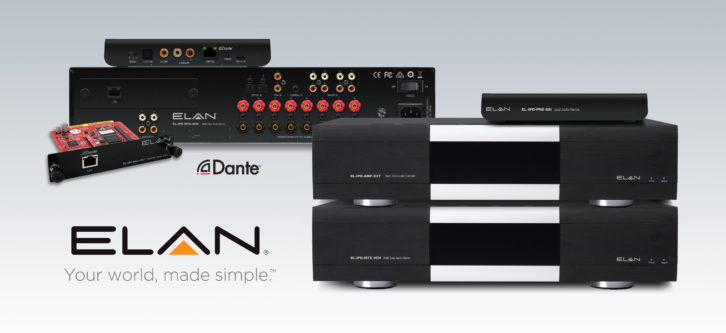
What is special about networking?
Computer networking is itself one of the marvels of the modern era, enabling communication and commerce at a massive scale. Networking standards are designed to be utterly data-agnostic, meaning that the technology can be used with nearly any sort of payload, whether it’s email, a streaming movie, or real-time audio.
Critically, networking does away with point-to-point connections between devices. Point-to-point connections are the way we’ve used analog equipment for decades; a device has “output” ports that are connected via specialized cables to “input” ports elsewhere in the system. The physical connections define the signal flow, which is rigid and fixed by cables carrying information in one direction only.
In contrast, networked devices are all connected simultaneously as peers. Signals (data) may flow between any two or more points, controlled by the software. A single Ethernet cable carries data in both directions and for many, many devices at one time, by design. This all means that a networked system is defined by software and is thus infinitely flexible, with no need to run special single-purpose cables between devices for anything. This incredible adaptability vastly reduces the amount and type of cables required, saving professionals time and money.
Related: Dante Comes Home
Why use audio-over-IP in the home?
The brief description above only begins to outline the advantages of AoIP in residential installations. A home built to include robust, 1 Gbps wired networking is common and not at all cost-prohibitive. This allows home installers and users to utilize robust audio capabilities, featuring:
- Support for a nearly unlimited number of endpoints
- Ability to cover large distances with no losses or noise
- Support for high channel count devices (typically up to 64 channels)
- 100 percent lossless, pristine audio at up to 192 kHz sample rate
- All control and audio data on a single cable
- Ability for all home networking (internet, home automation, audio) to coexist with ease
- Easy interoperability between devices
- Easy installation with lightweight cable
- Easy expansion — just add a new device to a network port, and it’s ready to use.
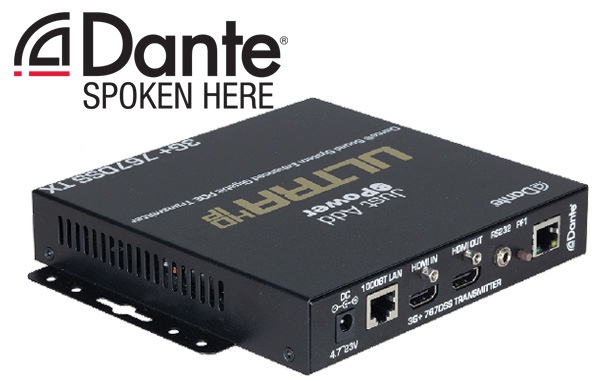
Three ways audio-over-IP is impacting residential installations today.
While AoIP has clear advantages in homes, usage is rapidly increasing for several more timely reasons.
More manufacturers are embracing AoIP, bringing to market products that target home users for the first time. Networking makes it easy to deploy high-quality audio in homes of nearly any size or configuration, with no worries about signal degradation on long analog runs. Multi-channel devices are easily handled for home theater and more.
Second, during the Covid-19 pandemic, more people have been constrained to their homes, including many musicians and other audio enthusiasts. The result is a boom in home recording studios, many of which mimic their professional counterparts in using AoIP gear. By choosing AoIP products, the same gear is equally usable at home as in modern studios, and completely interoperable.
Third, as broadcasters find that much of their talent is confined to their homes, the need for redundant locations has become clear and urgent. Since broadcasters already use AoIP for the reasons outlined above, having an AoIP-based home system allows for a seamless connection to ports and audio devices essential for keeping the show on the air. The idea of fault tolerance is no longer “have two studios”; it is “have a studio anywhere.”
Residential networks are here to stay.
Adding Cat5/6 structured cabling to a house build is an efficient and cost-effective way to ensure that homeowners will have access to the widest variety of high-quality options for audio and video distribution, home security, internet access and more, for many years to come.
Audio over IP is only one such application, but is compelling for its unparalleled flexibility and bit-perfect fidelity.
And, with more and more products supporting AoIP, residential systems are now poised to take listeners to the next level.
Residential Systems is now on LinkedIn! Click here to follow us for business and technology insights!
